About the Pacoima Reservoir Restoration Project
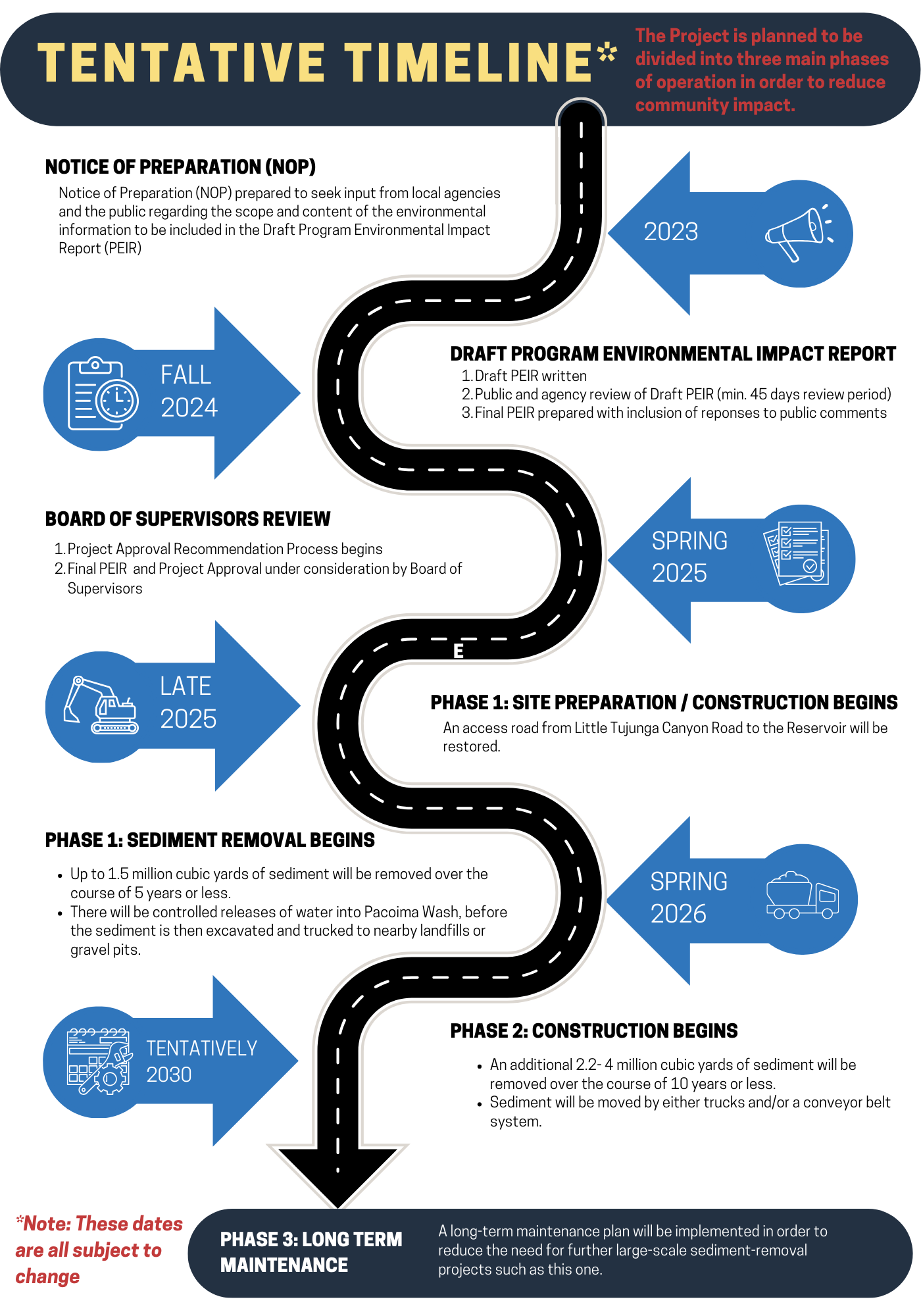
The Current Stage of the Project – Program Environmental Impact Report
Public Works is preparing a Draft Program Environmental Impact Report (PEIR) pursuant to the California Environmental Quality Act (CEQA). A Notice of Preparation (NOP) has been prepared to seek input from local agencies and the public regarding the scope and content of the environmental information to be included in the Draft PEIR.
A 30-day review period for the NOP began on August 16, 2023. In response to community requests, Public Works extended the comment period by 60 days until November 15, 2023. Three public scoping meetings were also held on August 30 and 31 as well as October 12, 2023.
Responsible agencies and Community members will also have an opportunity to review and provide comments on the full Draft PEIR Report upon completion, anticipated once it has been completed in Spring-Summer 2024.
How Will The Pacoima Reservoir Restoration Project Help Protect Local Residents?
This Project aims to remove up to 5.5 million cubic yards of sediment over the course of two phases, tentatively scheduled to start in late 2025.
- This removal will allow Public Works to defend local communities against flooding caused by future extreme weather events.
- Capacity will be restored within the Reservoir to maximize rainwater capture during storm events.
- Stormwater captured in Pacoima Reservoir is then released and diverted into downstream spreading grounds for recharge of the San Fernando Groundwater Basin. This recharge helps to increase our local water supplies.
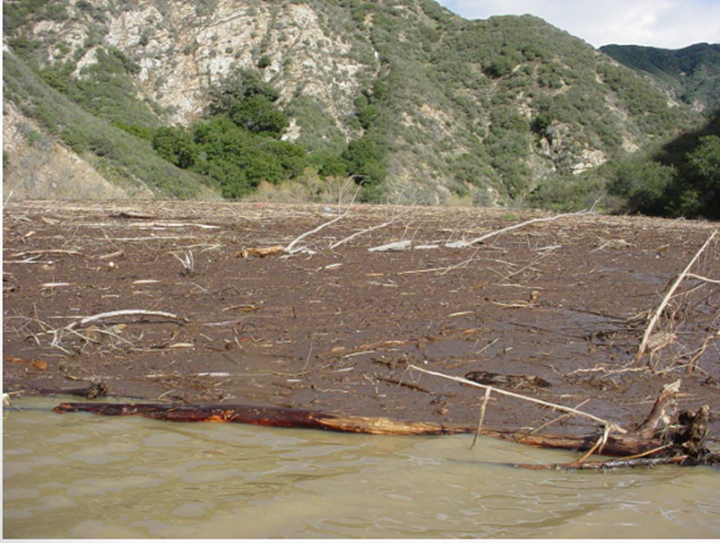
What Is Sediment And Why Is It An Issue?
- Sediment is made of soil, sand, and rock that is eroded by storms and carried from hillsides into streams and reservoirs. Over time it accumulates within the Reservoir, reducing water storage capacity, and blocking the Dam’s intake gates, risers, and valves.
- The Pacoima Reservoir’s lowest outlet valve is currently buried under 80 feet of sediment. If 20 additional feet of sediment build-up, all of the Reservoir’s other outlet valves used for storm operations will be blocked and the Reservoir will become inoperable.
- The Dam is roughly 60% full of sediment (5.5 million cubic yards of sediment in storage out of the original capacity of 9.8 million cubic yards).
- If this were to occur, the Dam’s ability to provide flood protection would be compromised.
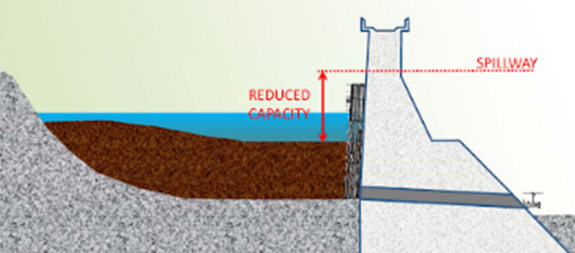
Why is This Project Needed Now?
- A series of wildfires – Marek (2008), Sayre (2008), Station (2009), Sand (2016), and Creek (2017) – have burned 96% of the area draining to the Reservoir.
- Over 700,000 cubic yards of sediment deposited since the Station Fire (2009).
- Heavy storms then washed the debris created by these fires into the Reservoir, causing an above-average buildup of sediment.
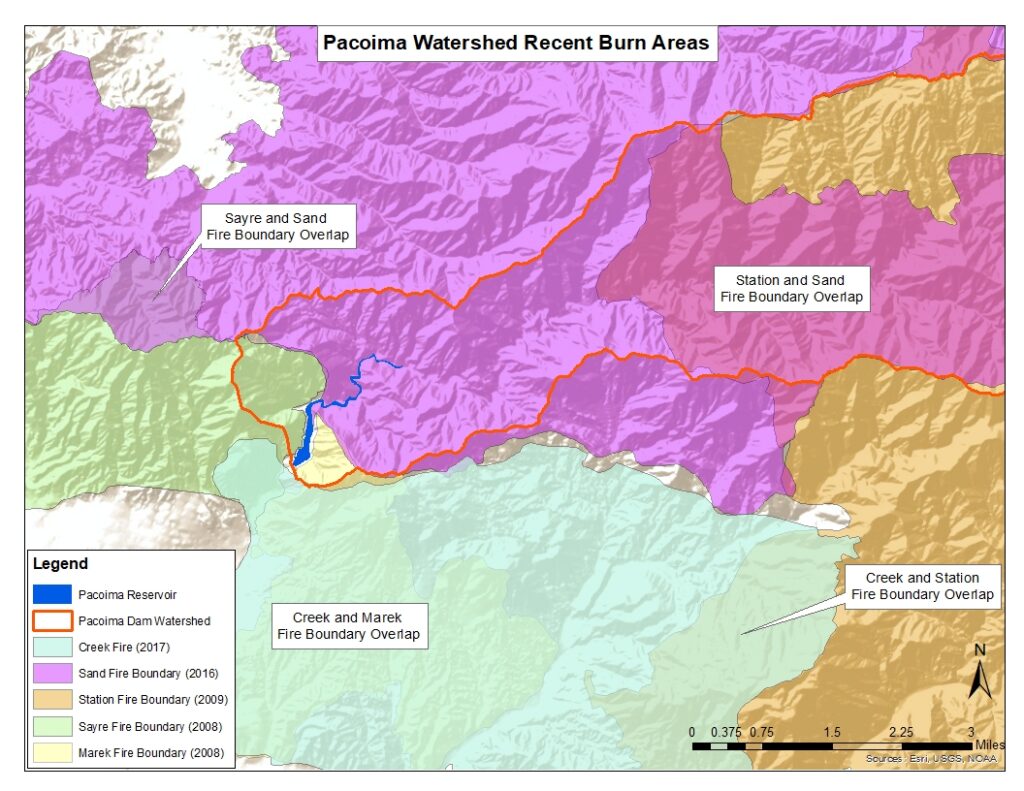

What Will Happen to the Sediment in Phase 1?
- The sediment removed in Phase 1 may be moved by trucks. The exact truck haul routes and final destinations for this sediment are still being assessed and determined during this current Planning Phase. Some potential options are shown below.
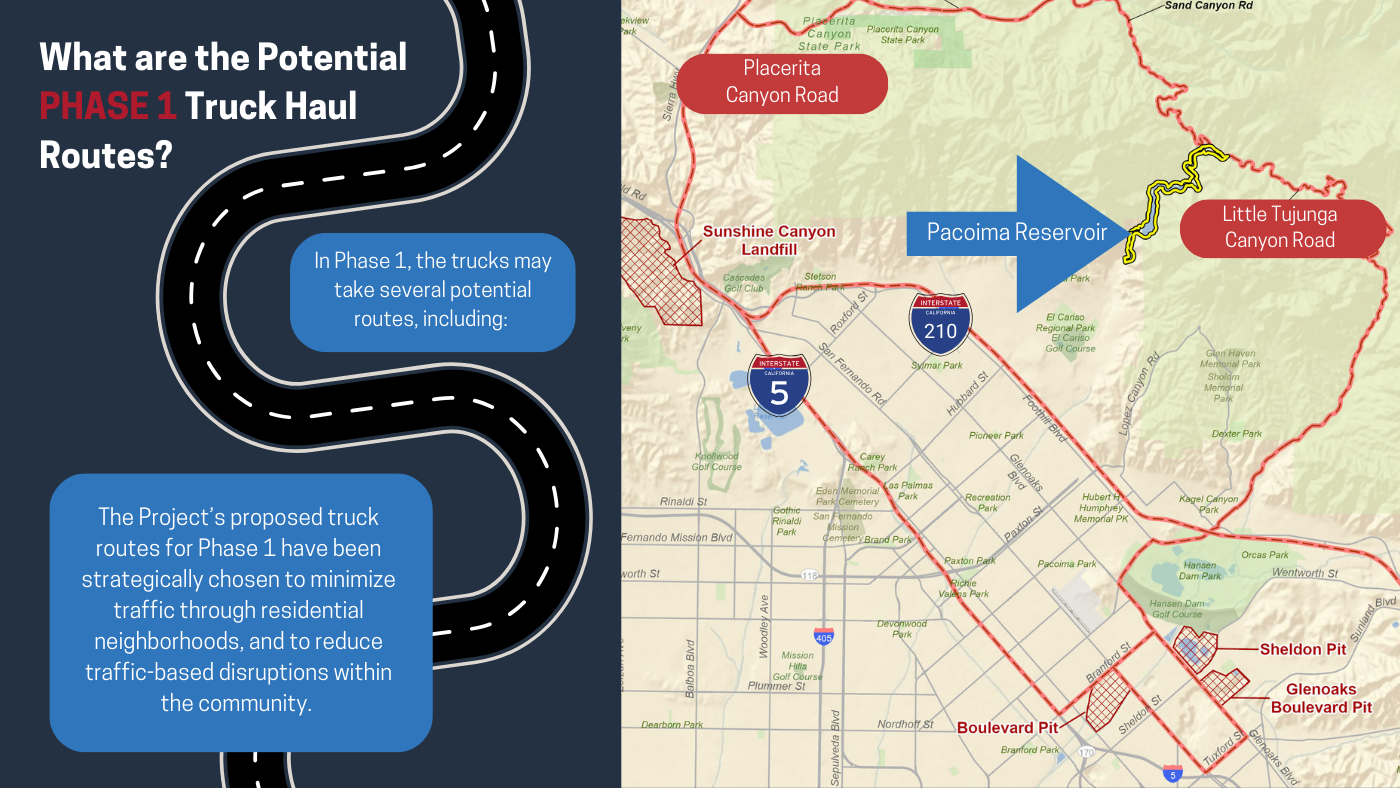

What Will Happen to the Sediment in Phase 2?
- The sediment removed in Phase 1 will be moved by either trucks or a conveyor belt system. The exact transportation mechanism and final sediment placement sites are still to be determined in the Planning Stage for Phase 2. Some potential options are shown below.
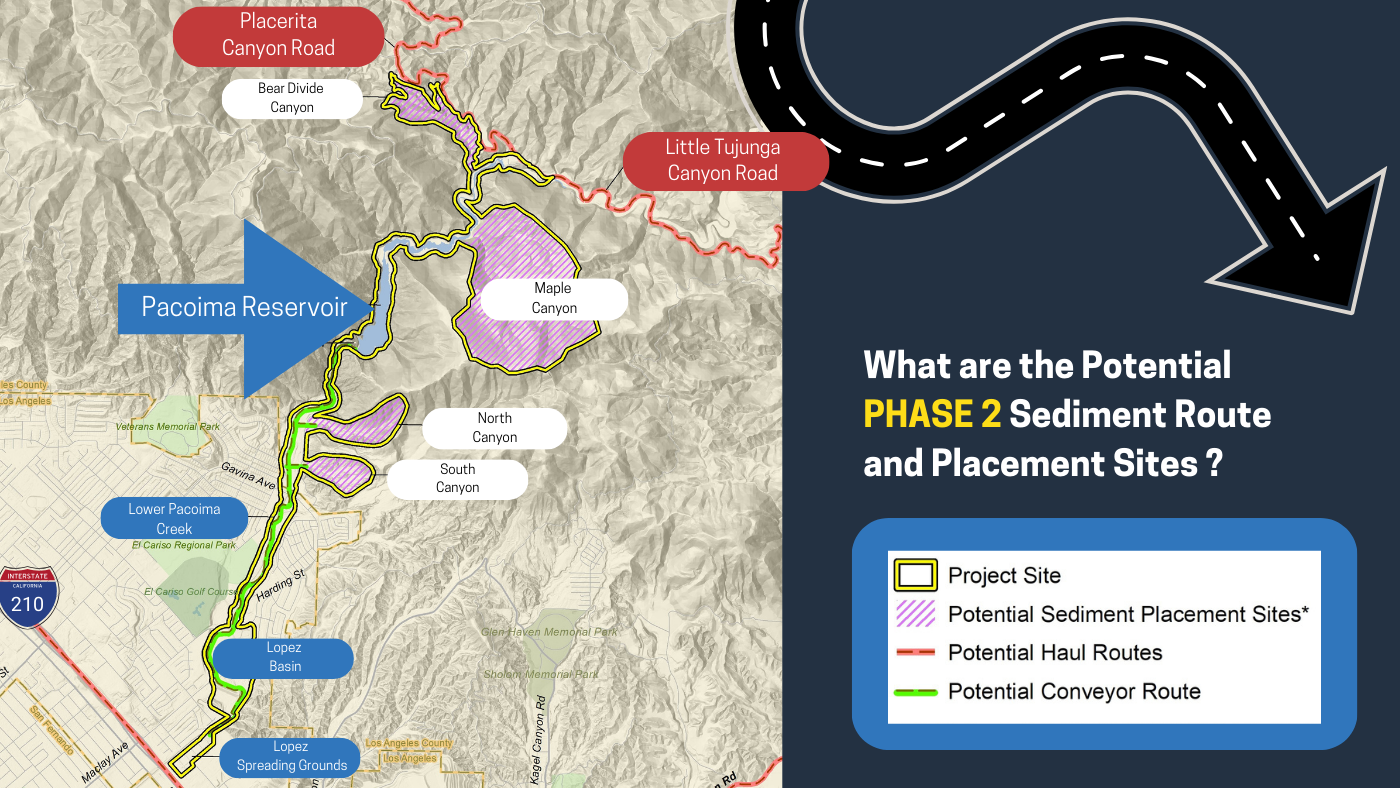

We want to hear from you! Please reach out with any questions or comments to Project Manager Alex Ho at reservoircleanouts@pw.lacounty.gov
